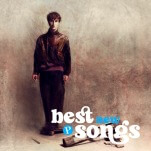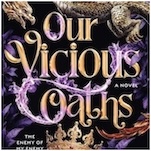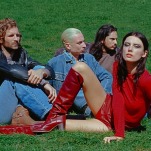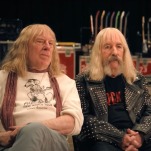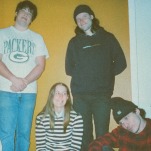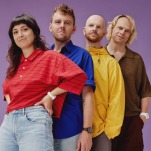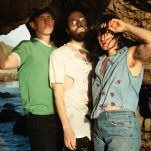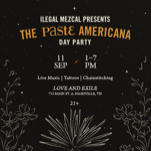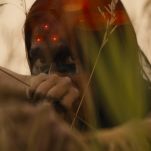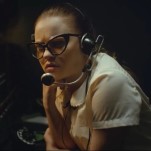The 25 Greatest Artists Who Only Released 2 Albums
Photos by Tim Mosenfelder/Ginny Winn/Michael Ochs Archives/Getty Images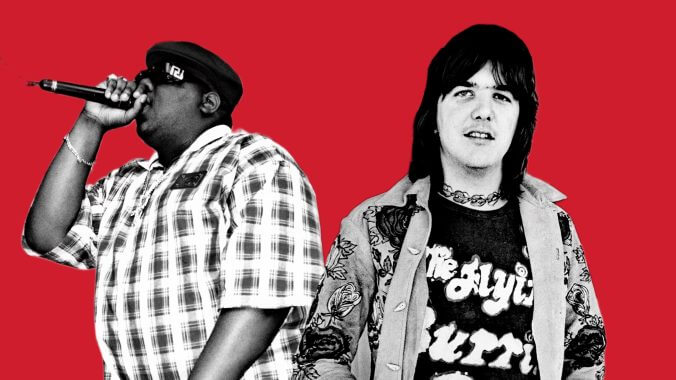
An artist getting the opportunity to make even one album is a rare thing indeed. To get a shot at recording a follow-up? We’re into water-into-wine territory. The artists who made the cut for this list hopefully realized what a miracle it was that they were given the shot to reach that mountaintop twice, even if many of the people involved had produced plenty of music before and some are still cranking out great material to this day. Yet these little carve out from their careers feel double rainbow special. In the case of some, two albums was all they were able to complete before their untimely passing. For others, it was all they could manage before their willingness to put up with their bandmates brought about the end of the group. For a rare few on this list, there’s still a chance we will get a proper follow up to their second album, but we’re not holding our breath. No matter what the situation, these 25 artists held it together long enough to complete a pair of albums that still remain in heavy rotation on our personal stereos, giving us ample opportunities to share in their miracle of their brief but bright existences. — Associate Music Editor, Robert Ham
25. Sugar
Bob Mould has released a lot of great albums with Hüsker Dü and as a solo artist, but it was his first with Mercyland drummer David Barbe and Human Sexual Response drummer Malcolm Travis that may be my favorite. Sugar’s Copper Blue is full of power pop injected by the jangle of R.E.M. and the grunge of Nirvana, and if perfect can be used to describe a piece of art, you might as well use it here. That’s not to take anything away from the ironically titled noisier follow-up File Under Easy Listening. But for a short-lived band with just two full-length albums (along with an EP and a compilation), they left us with a masterpiece. —Josh Jackson
24. The Teardrop Explodes
This entry into the list may be a controversial one. Technically speaking, post-punk group The Teardrop Explodes did release a third LP, the unfortunately named Everybody Wants To Shag… The Teardrop Explodes, in 1990. That “album,” however, was a muddle, sticking pieces from the aborted sessions the group undertook in 1982 (which ended when the band’s leader Julian Cope dissolved the group permanently) next to tracks taken from non-album singles. In the considered opinion of this editor, it’s a compilation. And who would want to look beyond the perfection of the two LPs that this Liverpool group made during their hot and fast existence. Cope achieved the goal he set forth to Melody Maker in 1980: “What I’m trying to do is strike a balance between triteness and greatness.” As I read it, he was trying make wild and wildly romantic musical statements using, in his mind, the rather ephemeral rudiments of pop music. The group may have augmented their sound with horns and the influences of Afropop, dub and torch balladry, but their core was candyfloss psych bubblegum ideal for the side of a 45 single that will spend a few months in heavy rotation before being replaced by the next hot item. Maybe Cope both did and didn’t want their music to be built to last, but damn if it hasn’t remained a keystone for the next four decades of British pop and rock. —Robert Ham
23. Traveling Wilburys
Supergroups come and supergroups go, and they’ve been around for decades. From Cream to boygenius, the list of legends continues to grow—but few acts can claim as much greatness as the Traveling Wilburys could in 1987. Consisting of Bob Dylan, George Harrison, Roy Orbison, Tom Petty and Jeff Lyne, the band formed after sessions for Harrison’s Cloud Nine album concluded and consisted of, quite literally, five of the most important songwriters in the history of rock ‘n’ roll up until that point. Their first record, Traveling Wilburys Vol. 1, came out in 1988 and boasted all-time great tracks like “Handle with Care,” “Tweeter and the Monkey Man” and “End of the Line”—the former being one of the best rock openers of the 1980s altogether. Orbison would pass away soon after, but the Wilburys would continue on—skipping past volume two and releasing Vol. 3 as just a four-piece. Tunes like “She’s My Baby” and “Wilbury Twist” found the whole quartet singing and gallivanting about, while “Inside Out” and “New Blue Moon” leaned more into folk rock and doo-wop. The Wilburys would disband in 1991, and the only remaining living members are Dylan and Lynne. But, for three years, they were one of the greatest supergroups to ever exist. —Matt Mitchell
22. Burial
There was a delicious few years there when music fans had no idea about the identity of the artist known as Burial. The mysterious figure sneaked through the shadows, dropping little artistic missives in the hands of long-time label Hyperdub, which they dutifully released into the world. With each single, and then his two long-playing albums Burial from 2006 and Untrue from a year later, Burial burned a new pathway through garage, dubstep and 2-step that allowed for wobbling rhythms, dead space and lots and lots of crackle and static from vinyl records that might have been dragged behind a black cab navigating the streets of South London. And on his second album, he even dared to get a little soulful with the appearances of some guest vocalists. Of course, Burial couldn’t leave them well enough alone, warping and chopping the singer’s contributions to better fit the hiccuping patterns of the music. Of all the artists on this list, Burial is probably the one that will mostly likely surprise us with a new album, rendering his entry on this list null and void. I would be very pleased were that to happen, but like that feeling of wonder at not knowing exactly who was behind this music (turned out to be a gent named William Bevan), it makes me giddy to think that he’ll simply keep leading us on with the occasional single or EP and leave the full-lengths to the overachievers of the world. —RH
21. This Heat
Everyone’s favorite experimental, revolutionary, punk and post-punk, sound collaging, tape looping, English trio who only released two albums, This Heat exists truly in a class of their own. I know we throw some words around a lot here, even I’ve been guilty of describing one too many things as “singular.” But I mean it wholeheartedly when I say that there has never been anyone quite like This Heat. They started in the midst of the English punk scene, operating with influences reaching far out of their geographic and sonic boundaries. The group began working on their first album in a studio they called “Cold Storage” which was exactly what it sounds like it would be: a converted cold storage freezer room This Heat came in 1979, two years after the group received their first ever radio airplay by none other than the legendary John Peel.
The This Heat album was interested in the layering of sounds to create atmosphere, using techniques of tape looping, distortion and stereo microphones. It was thick and willful, paying no mind to the conventions of rock and punk song structure. Two years later, they released their second and final album Deceit which saw the group settling into some semblance of structure, all the while not sacrificing their signature qualities of performance and production. Tracks still featured layered screams under whirring feedback over the dissonance of the vocals the three members shared, but they also offer the listener some sort of refrain, or at least infectious melody to hold onto. Though neither of their albums were the most commercially successful at their release, This Heat is credited as being pioneers of numerous experimental and forward-thinking genres—post punk, post rock, industrial, the list goes on. Their two albums serve merely as a snapshot of the restlessness and innovation they all had within them. —Madelyn Dawson
20. Digable Planets
The explosion in growth that this Philly-by-way-of-Brooklyn trio underwent between albums #1 and #2 should be a case study in how an artist can truly capitalize after landing a hit right out of the gate. The first single by Digable Planets, the #15 hit “Rebirth of Slick (Cool Like Dat),” presaged a new blending of jazz and hip-hop as the group smoothly intoned over a tight flip of an Art Blakey tune. The rest of their debut album, 1993’s Reachin’ (A New Refutation of Time and Space) fulfilled that song’s promise with tightly crafted productions that raided the jazz catalogs of various labels while Butterfly, Doodlebug and Ladybug maintained an Arctic cool on the mic. Jump ahead a year to the release of Blowout Comb and you’ll hear a group that refused to simply follow the template of their previous successes. Instead, they turned in an explosive collection of material that felt Cinemascope in tone and ambition. The productions were melancholic yet funky with the group pulling from crates of ’70s R&B / soul records for source material, and volumes on Black nationalism and the carceral state to inform their lyrics. —RH
19. Jellyfish
California psych-pop group Jellyfish likely did themselves few favors by choosing a wardrobe that was a direct reflection of their love of ’60s/’70s culture (lots of flared trousers, colorful prints and flowery fabrics). In some circles, it made it easier to write the band off as an exercise in kitsch. But underneath all the velvet and denim was some of the sharpest songcraft you are likely to hear. Debut album Bellybutton from 1990 sounds like a scroll of easily identifiable influences — 10cc, Todd Rundgren, Wings, Queen — that are all given a light tweaking and nose booping by some young men that haven’t let their romantic yearnings dull their childish sense of humor. Follow up 1993’s Spilt Milk is all that and more as the group encouraged their arena rock ambitions on brighter, brassier cuts like “New Mistake” and “Too Much, Too Little, Too Late.” Their inability to actually gain enough commercial traction to fill a stadium, as well as ongoing intraband tensions, led to the group’s dissolution and the broken hearts of their many still-dedicated fans. —RH
18. Grinderman
You’ve not heard the last from Nick Cave on this list (see entry #14), but we’ve likely heard the last of this short-lived noise-rock side project featuring the lithe singer and three other members of his mighty backing band, the Bad Seeds (drummer Jim Sclavunos, multi-instrumentalist Warren Ellis and bassist Martyn Casey). Heard in hindsight following the release of much new music by Cave, it would appear that this outfit was the last burst from an artist that came up through the post-punk scene spewing a ton of venom (again, entry #14) at the world. And for some fans, hearing Cave get good and nasty after a few albums that sounded like he was getting soft around the middle was a welcome reminder that his nasty side was still very much within reach. Both of the LPs this quartet squirted out feel covered in a sticky film of body fluids, booze and Marmite. There’s a touch of the romantic apparent on tunes like “Palaces of Montezuma” from 2010’s Grinderman 2 and “When My Love Comes Down” from the self-titled 2007 release. Otherwise, Cave’s sole concern is getting laid in some truly outrageous fashion, or lashing viciously out at the world because he isn’t getting any. All the while, the band roars along their support for their fearless and horny leader, thrashing out a blues-bending racket that could easily set off any seismometers nearby. —RH
17. Elastica
You forgot that Elastica made a second album, didn’t you? Or maybe you didn’t even know that 2000’s The Menace even existed. That wouldn’t be a shock considering how quickly that record was snowed over in the States by the rise of nü-metal and rap-rock. Not helping matters was the long wait that fans had to endure after the release of the group’s self-titled LP (five years!) and the lineup changes that went on along the way (the brilliant guitarist Donna Matthews took off in 1998 and bassist Annie Holland quit and then rejoined the fold). Bandleader Justine Frischmann also dared to try to move beyond the slashing guitars and motorik rhythms of their debut. In came funkier rhythms inspired by club music and moodier experiments like the droning “My Sex” and the Creatures-like “Image Change.” I’m not here to tell you that The Menace is as good or better than its predecessor. That would be impossible as Elastica is tightly wound Britpop perfection that doesn’t miss a single trick. But the follow-up is much better than most folks, including its creator, gives it credit for. It’s been 23 years already. Long past time for a reassessment of this album’s many strengths and thrills. —RH
-

-

-

-

-

-

-

-

-

-

-

-

-

-

-

-

-

-

-

-

-

-

-

-

-

-

-

-

-

-

-

-

-

-

-

-

-

-

-

-




















